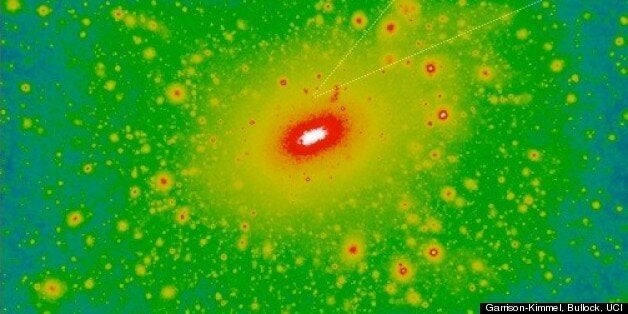
Astronomers have found a dwarf galaxy so surprisingly small it's like "discovering an elephant smaller than a mouse."
The tiny and faint collection of 1,000 stars called Segue 2 orbits the Milky Way 35 kilo-parsecs (114,170 light years) away from our Sun.
It is held together by a small amount of dark matter, the abundant and mysterious substance that has never been seen.
Because the light emitted fron Segue 2 1/20 billionth of that from our own Milky Way, it took the world's most powerful telescopes at the Keck Observatory in Hawaii to find it.
University of California Irvine cosmologist James Bullock, who led the co-authored the research, said in a statment: "Finding a galaxy as tiny as Segue 2 is like discovering an elephant smaller than a mouse."
Astronomers had long theorised the universe would be teeming with this type of galaxy but the inability to find any "has been a major puzzle, suggesting that perhaps our theoretical understanding of structure formation in the universe was flawed in a serious way."
Lead author, Even Kirby, called the discovery a "tip-of-the-iceberg observation" which could lead to the finding of many more.
He added: "The Keck telescopes are the only ones in the world powerful enough to have made this observation."
By calculating the upper weight range of 25 of the major stars in the dwarf galaxy, Kirby and colleagues found that Segue 2 is 10 times less dense than had previously been estimated.
Such findings help to further understanding on the origins of the universe as well as shed light on the dark matter 'halos' that hold together galaxies and distinguish them from star clusters.